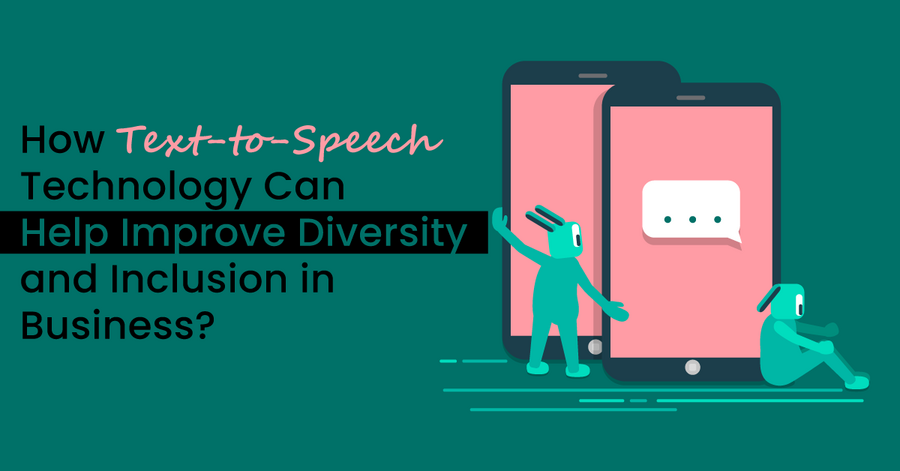Text-to-speech technology, often shortened to TTS, is a type of software that reads out written text aloud. It turns words on a screen into a spoken voice. This tech is super helpful for people who have trouble reading or for when you want to listen to text instead of reading it, like with ebooks or online articles.
In this article, we will discuss how Text-to-Speech technology works, its various uses, and why it’s becoming more popular. We’ll keep things easy to understand, focusing on the basics and some cool ways people are using TTS in their daily lives.
Brief overview of text-to-speech technology.
Text-to-speech technology is changing the way businesses interact with customers. It converts written text into spoken words, making information more accessible. This technology is key in customer service, as it helps in creating automated responses and guides.
Its importance is growing because it makes services faster and more user-friendly. Text-to-speech helps people who have trouble reading screens, like the visually impaired. It’s also great for multitaskers who listen to content while doing other things.
Overall, text-to-speech technology is a big help in business. It improves customer experience and accessibility. It’s a simple but powerful tool that’s becoming essential in today’s digital world.
Understanding Diversity and Inclusion in the Workplace
Definition and Importance of Diversity and Inclusion
Diversity and inclusion mean having people from different backgrounds working together. It’s important because it brings new ideas and perspectives.

This helps businesses understand their customers better and find new solutions. A diverse team can make a company more successful and a better place to work for everyone.
Current Challenges in Achieving Diversity and Inclusion
Getting diversity and inclusion right is hard. Companies often struggle with hidden biases that affect who they hire and promote.
Another big issue is making sure everyone feels included and respected. Businesses need to really focus on these areas to make their teams diverse and welcoming for all.
The Role of Text-to-Speech in Enhancing Accessibility
Text-to-speech technology is a game-changer for employees with disabilities. It converts written text into spoken words, making digital content more accessible. For people with visual impairments or reading difficulties, this tech opens up new opportunities.
In the workplace, text-to-speech tools help in reading documents, emails, and web pages. It’s like having a personal assistant who reads out everything. This support is crucial for inclusive work environments.
Examples of this technology include screen readers and speech-enabled email apps. These tools empower employees with disabilities to work more efficiently. They can participate fully, boosting their confidence and productivity. Text-to-speech is not just a tool, but a bridge to a more accessible world.
Improving Communication Across Language Barriers
Text-to-Speech Basics:
- Changes writing to speech.
- Helps people who speak different languages understand each other.
- Works like a quick, computer translator.
Real Business Examples:
- A tech company used it for teaching staff from many countries.
- Another business used it for all their important messages, so everyone understands, no matter what language they speak.
How It Helps in Workplaces:
- Makes the office friendlier for everyone.
- Makes talking and working together easier.
- Connects teams from all over the world.
Text-to-Speech for Training and Development
Text-to-speech technology is changing how we do employee training. It’s a tool that reads out written text. This is great for training because it suits different ways people learn.
One big plus is that it helps folks who find reading tough or are not native English speakers. They can hear the information, making learning easier and more inclusive. This tech also lets employees learn while doing other tasks, like driving.
In short, text-to-speech technology makes training more accessible for everyone. It supports different learning styles and backgrounds, making sure all employees get the same chance to learn and grow.
Future Trends: Text-to-Speech and Inclusive Business Practices
Text-to-speech technology is becoming vital for businesses. It helps people who struggle with reading to access information easily. This tech reads out written content, making websites and apps more user-friendly.
Inclusivity in business is also a key trend. It means creating services that everyone can use, regardless of their abilities. By using text-to-speech, companies show they care about all customers. This approach is not just good ethics, but also smart business. It attracts a wider audience.
FAQs
What is text-to-speech technology?
Text-to-speech (TTS) technology is a tool that converts written text into spoken words using synthetic voices.
How can TTS technology benefit diversity in the workplace?
TTS technology helps make digital content more accessible to individuals with diverse needs, such as those with visual impairments or language differences.
In what ways does TTS promote inclusion in business communications?
TTS ensures that information is available in multiple formats, making it inclusive for employees or customers with varying abilities and preferences.
Can TTS technology assist non-native English speakers in business settings?
Yes, TTS can help non-native English speakers understand and engage with content more effectively by providing spoken explanations.
Conclusion
Text-to-speech technology helps businesses a lot. It makes info easy to access for everyone, including those with disabilities. This tech also saves time and money. It’s great for customer service and learning tools.
In the future, it will keep getting better, helping businesses more. This tech is a smart choice for any company.